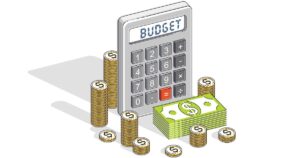Cash flow and profit are two important terms in business. Cash flow shows how money moves in and out of a company, while profit is what’s left after all expenses. Understanding the difference between cash flow and profit helps businesses make better financial decisions.
Many people think cash flow and profit are the same, but they are not. While profit measures the success of a business, cash flow shows its ability to pay bills on time. Understanding the difference between cash flow and profit is key to keeping a business healthy.
If you’ve ever wondered why a profitable business can still struggle with bills, it’s because cash flow and profit tell different stories. By learning how to manage both, you can ensure your business stays strong and grows steadily. Keep reading to discover why this difference is crucial for your financial success.
What is Cash Flow and Profit?
The distinction between cash flow and profit is crucial for understanding a business’s financial health. The term “cash flow” refers to the amount of money moving in and out of a company. It encompasses all financial transactions, including payments from customers and expenses such as salaries and rent.
The term “profit,” on the other hand, represents the difference between total revenue and total expenses. Profit is often used as a measure of a company’s overall financial performance. Understanding these concepts helps in assessing how well a company is managing its resources and sustaining its operations.
What is the Relationship Between Cash Flow and Profitability?
The relationship between cash flow and profitability is often misunderstood. The key is that while they are related, they are not the same. Profitability measures how much money a company makes after all expenses have been deducted from revenue. Cash flow focuses on the liquidity aspect, or how well a company can meet its short-term obligations.
It is possible for a company to be profitable but still face cash flow issues if the timing of cash inflows and outflows is not well managed. Thus, cash flow management is essential for maintaining operational stability even in profitable businesses.
Which is More Important: Cash Flow or Profit?
The question of which is more important, cash flow or profit, depends on the context. Profit is often seen as a key indicator of long-term financial health and business success. Cash flow is critical for day-to-day operations.
Without sufficient cash flow, a profitable company might struggle to pay bills and wages on time, potentially jeopardising its operations. It’s essential to balance both aspects, ensuring that a business remains profitable while also maintaining healthy cash flow to cover immediate financial needs.
How Profits and Cash Flow Differ in Very Basic Terms?
The difference between profits and cash flow can be summarised simply. Profits are calculated as revenue minus expenses and reflect the overall financial performance of a company. Cash flow is concerned with the actual movement of cash in and out of the business.
Profit can indicate a successful business model, positive cash flow ensures that the company can handle its financial obligations. In basic terms, profit shows how well a company performs financially, while cash flow shows how well it manages its money.
What is the Difference Between Income and Cash Flow?
The difference between income and cash flow is often a point of confusion. Income generally refers to the revenue earned by a company, such as sales and investments. It represents the total earnings before expenses are deducted.
Cash flow reflects the actual cash available to the business after accounting for all operational, investing, and financing activities. The distinction is important because income might not immediately translate into cash, especially if sales are made on credit or if there are delays in receivables.
Understanding Operating Cash Flow
The term “operating cash flow” refers to the cash generated from a company’s core business operations. It excludes cash from investing and financing activities.
The operating cash flow is a crucial metric as it indicates whether a company’s core business activities are generating sufficient cash to sustain operations. It provides insight into the efficiency of the company’s operations and helps in assessing the sustainability of its business model.
The Role of Cash Flow in Business Stability
The role of cash flow in business stability cannot be overstated. Positive cash flow ensures that a business can meet its short-term obligations and invest in growth opportunities.
Without adequate cash flow, a business might face challenges such as delayed payments to suppliers or inability to cover operational costs, even if it is profitable. Effective cash flow management is essential for maintaining operational efficiency and financial stability.
Profit Margins and Cash Flow Analysis
Profit margins are an important aspect of financial analysis, providing insight into a company’s profitability. However, analysing cash flow is equally important to understand how well a company manages its cash resources.
A high profit margin does not necessarily mean a company has good cash flow. By analysing both profit margins and cash flow, investors and managers can gain a more comprehensive view of a company’s financial health and operational efficiency.
Impact of Depreciation on Profit and Cash Flow
Depreciation affects both profit and cash flow but in different ways. Depreciation is a non-cash expense that reduces reported profit but does not impact cash flow directly. It represents the allocation of the cost of an asset over its useful life.
Depreciation lowers taxable income and can lead to tax savings, it does not reflect the actual cash impact on the business. Understanding this distinction helps in assessing the true financial performance of a company.
Cash Flow Statements vs. Profit and Loss Statements
Cash flow statements and profit and loss statements are both essential financial documents but serve different purposes. The profit and loss statement, or income statement, shows the company’s revenues, expenses, and profit over a specific period.
The cash flow statement, on the other hand, provides details on the cash inflows and outflows from operating, investing, and financing activities. Both statements offer valuable insights, but together they provide a complete picture of a company’s financial health.
The Influence of Credit Terms on Cash Flow
Credit terms have a significant impact on cash flow. The length of credit terms extended to customers can affect the timing of cash inflows. Longer credit terms might lead to delays in receiving cash, which can strain cash flow.
Conversely, managing credit terms effectively can improve cash flow by accelerating the receipt of payments. Companies need to balance offering attractive credit terms to customers with maintaining healthy cash flow.
How Seasonal Changes Affect Cash Flow and Profit?
Seasonal changes can influence both cash flow and profit. For businesses that experience seasonal fluctuations, cash flow might vary significantly throughout the year.
During peak seasons, cash inflows might increase, while off-seasons could lead to reduced cash flow. Profitability may also be impacted by these seasonal variations. Effective financial planning and cash flow management are crucial for navigating these seasonal changes and maintaining stability.
Cash Flow Management Strategies
Effective cash flow management strategies are essential for ensuring a company’s financial health. Techniques such as forecasting cash flow, managing accounts receivable and payable, and optimising inventory levels can help improve cash flow.
Implementing these strategies can enhance liquidity, reduce financial stress, and support sustainable growth. Businesses should regularly review and adjust their cash flow management practices to align with changing conditions.
The Importance of Cash Flow Forecasting
Cash flow forecasting is a vital tool for managing a company’s financial future. It involves predicting future cash inflows and outflows to anticipate potential shortfalls or surpluses.
Accurate forecasting helps businesses plan for funding needs, avoid cash shortages, and make informed decisions. Regular updates and adjustments to cash flow forecasts are necessary to reflect changes in business conditions and ensure effective financial planning.
Frequently Asked Questions
Q1. What is the primary difference between cash flow and profit?
The primary difference is that profit measures the overall earnings after expenses, while cash flow represents the actual movement of cash in and out of a business.
Q2. Why is cash flow important if a company is profitable?
Cash flow is crucial because it ensures the company can meet its immediate financial obligations, such as paying bills and salaries, even if it is profitable.
Q3. How does depreciation affect cash flow?
Depreciation is a non-cash expense that reduces profit but does not impact cash flow directly. It affects the reported profit but not the cash available to the business.
Q4. What role does cash flow forecasting play in business management?
Cash flow forecasting helps businesses predict future cash needs, avoid potential shortages, and make informed financial decisions.
Conclusion
The distinction between cash flow and profit is essential for understanding a company’s financial health. While profit reflects overall financial performance, cash flow indicates the liquidity available to meet operational needs.
Balancing both aspects is crucial for sustaining business operations and achieving long-term success. Effective cash flow management and a clear understanding of financial statements help businesses navigate financial challenges and maintain stability.

Milton is a seasoned financial strategist who shares expert insights and practical tips on mastering cash flow to help you achieve financial stability and growth.











